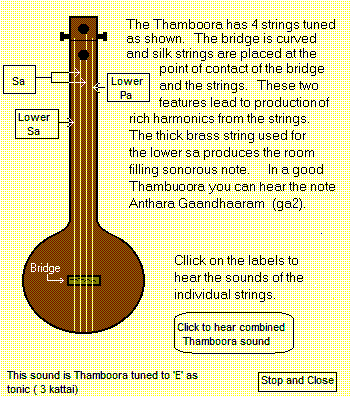
Musical notes may be sounded in succession to produce melody which is the predominant aspect of Carnatic Music. Different notes may be simultaneously produced for harmony which is an important constituent of Western Classical music. In either case the notes should have certain pitch relationships for producing music. Listen to a series of notes with randomly generated pitches and without musical relationship and another with musical relationship. Symbols used to indicate notes imply mutual musical relationships. Most systems use 7 symbols and in Carnatic Music the symbols 'sa','ri','ga','ma','pa','da','ni' are used to indicate the notes and are used both for writing notation and in singing 'solfa'. They are also referred to as Shadjam, Rishabham, Gaandhaaram, Madhyamam, Panchamam, Dhaivatham and Nishaadham
In Carnatic Music one note is taken as the foundation and given the symbol 'sa' also referred to as 'Aadhaara' Shadjam. The term 'Aadhaara' implies that the note is the foundation on which the music rests and other notes are related to it. The pitch of Aadhaara Sa is also referred to as Aaadhaara Sruthi. It may be equated to 'Tonic' or 'Key' used in western music. The Aadhaara Sa sounds as the basis of the music which has an inherent tendency to return to it and most compositions end in it. The artist often ends his Aalaapana (extempore raga singing) also in the Aadhaara Sa. Unlike in western music, the artist is free to choose a pitch suitable to his voice as Aadhaara Sa and for that concert or song the chosen pitch becomes sa. The importance of Aadhaara Sruthi has led to the use of a drone in the background for all Carnatic Music renderings. This drone is provided by Thamboora or a Sruthi box, which produce the Aadhaara sa, its fifth note pa and sa of higher octave (later on octave) in Sruthi Box and lower octave in Thamboora. More on Thamboora here. However, even when there is no drone the artist constantly keeps the Aadhaara Sa in his mind and the listener subconsciously feels it.